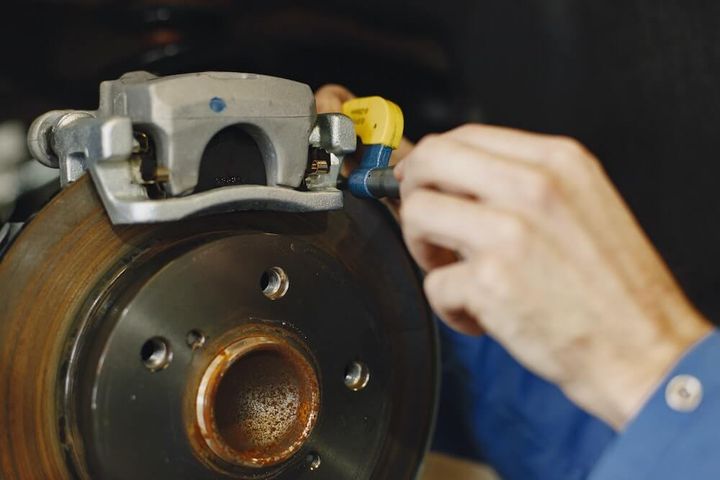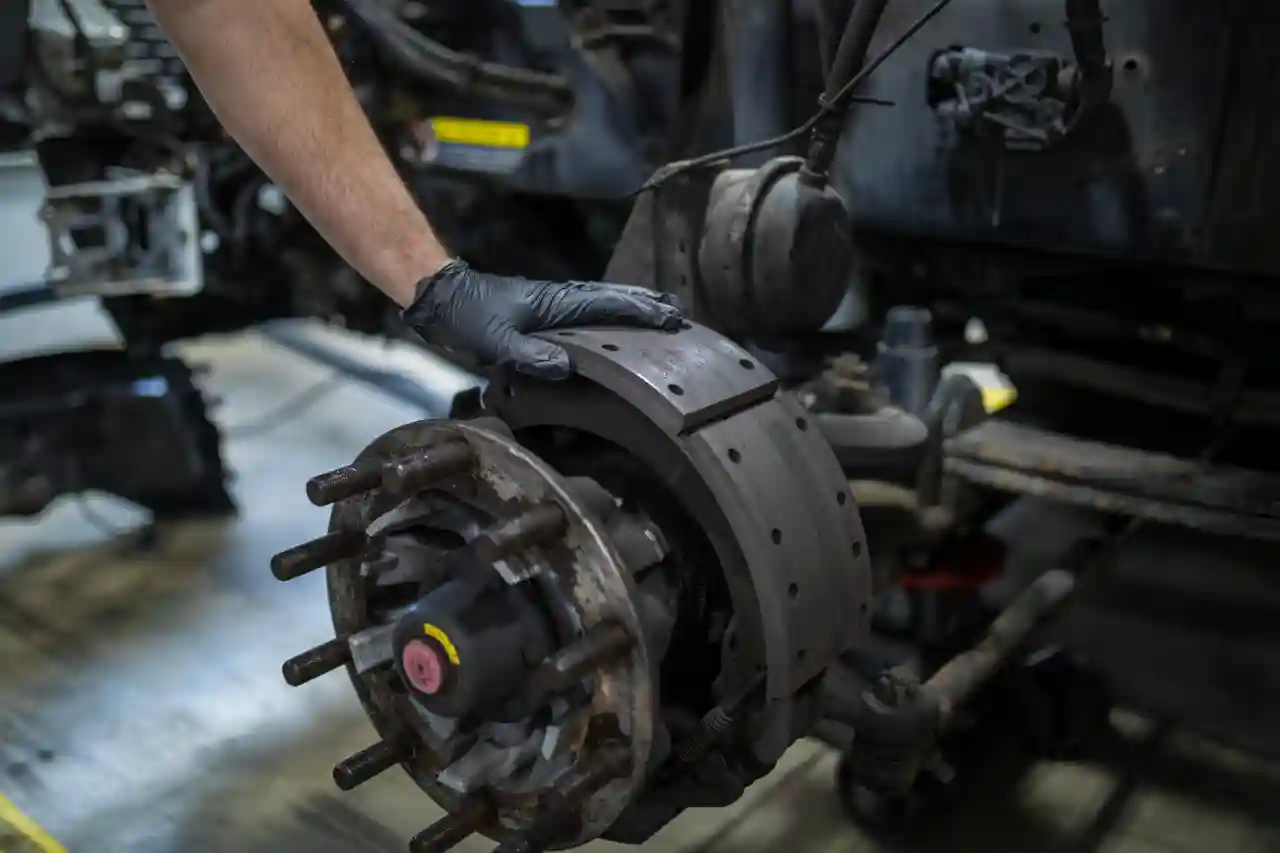


Maintaining a vehicle's braking system is crucial for safe driving. Brake fade and failure can lead to dangerous situations on the road, making it essential to understand the underlying causes. This article will explore the key factors that contribute to brakes fading or failing, including excessive heat buildup, worn or damaged components, driving conditions and techniques, and preventive measures.

Brakes work by converting a vehicle's kinetic energy into thermal energy through friction between the brake pads and rotors. While this heat can dissipate effectively under normal driving conditions, certain situations can cause excessive heat buildup, leading to brake fade or failure.
| Brake Pad Fade | Brake Fluid Fade | Brake Component Damage |
|---|---|---|
| At high temperatures, the resins that bind the friction material in brake pads can degrade, releasing gases that create an insulating layer between the pads and rotors. This insulating layer reduces the friction coefficient and braking power, resulting in decreased braking effectiveness. | Over time, brake fluid can absorb moisture, lowering its boiling point. If the brake fluid gets too hot, it can boil and create air pockets within the hydraulic system. These air pockets reduce the hydraulic pressure, leading to a significant loss of braking power and effectiveness. | Excessive heat can also cause physical damage to brake components. High temperatures can lead to warping or cracking of brake rotors, as well as accelerated wear of pads and other components. This damage compromises the ability of the braking system to function properly, increasing the risk of brake failure. |
At high temperatures, the resins that bind the friction material in brake pads can degrade, releasing gases that create an insulating layer between the pads and rotors. This insulating layer reduces the friction coefficient and braking power, resulting in decreased braking effectiveness. The brake pads may also transfer uneven layers of friction material to the rotors, creating hot spots and uneven wear patterns that can lead to brake judder or pulsation.
Over time, brake fluid can absorb moisture, lowering its boiling point. If the brake fluid gets too hot, it can boil and create air pockets within the hydraulic system. These air pockets reduce the hydraulic pressure, leading to a significant loss of braking power and effectiveness. The brake fluid may also become contaminated, further reducing its ability to transfer force effectively.
Excessive heat can also cause physical damage to brake components. High temperatures can lead to warping or cracking of brake rotors, as well as accelerated wear of pads and other components. This damage compromises the ability of the braking system to function properly, increasing the risk of brake failure. Warped or cracked rotors can cause vibrations, noise, and uneven braking, while worn pads may not provide sufficient friction for effective braking.
Even without excessive heat buildup, worn or damaged brake components can contribute to brake fade and failure.
Worn Brake Pads and Rotors
Damaged or Scored Rotors
Hydraulic System Issues
Over time, brake pads and rotors naturally wear down due to friction and use. As they wear, their ability to generate sufficient friction for effective braking diminishes. Additionally, worn pads may transfer uneven layers of friction material to the rotors, creating hot spots and uneven wear patterns that can lead to brake judder or pulsation. This uneven wear can further accelerate the degradation of the brake components, leading to reduced braking performance.
Damaged or scored rotors can also decrease the lifespan of brake pads and impair braking performance. Uneven surfaces on the rotors can cause vibrations, noise, and reduced braking efficiency. Scored rotors may also cause uneven wear on the brake pads, leading to premature replacement of both components.
Leaks in the hydraulic system or contamination of the brake fluid can also contribute to brake failure. Leaks can lead to a loss of hydraulic pressure, while contaminated fluid can affect the system's ability to transfer force effectively. This can result in a spongy or soft brake pedal, reducing the braking power and increasing the risk of brake failure.
Certain driving conditions and techniques can exacerbate brake fade or increase the risk of failure.
| Overloading the Vehicle | Aggressive Driving | Wet or Contaminated Brakes | Lack of Maintenance |
|---|---|---|---|
| Carrying excessive weight or towing heavy loads puts additional strain on the braking system. The increased mass requires more force to slow down or stop the vehicle, causing the brakes to work harder and generate more heat. | Frequent hard braking or riding the brakes (applying the brakes lightly for an extended period) can quickly overheat the system and accelerate wear. These aggressive driving techniques generate excessive heat and put unnecessary stress on the brake components. | Driving through deep water or mud can temporarily reduce braking effectiveness by creating a lubricating layer between the pads and rotors. This layer reduces friction and can lead to decreased braking performance until the contaminants are cleared from the system. | Neglecting to replace worn components or flush and refill the brake fluid as recommended by the manufacturer can lead to brake fade or failure over time. Regular maintenance is essential to ensure the braking system operates at optimal levels. |
Carrying excessive weight or towing heavy loads puts additional strain on the braking system. The increased mass requires more force to slow down or stop the vehicle, causing the brakes to work harder and generate more heat. This additional heat can lead to brake fade or failure, especially in situations where frequent braking is required, such as driving on steep or winding roads.
Frequent hard braking or riding the brakes (applying the brakes lightly for an extended period) can quickly overheat the system and accelerate wear. These aggressive driving techniques generate excessive heat and put unnecessary stress on the brake components. Hard braking can cause the brake pads to wear down more quickly, while riding the brakes can lead to overheating and potential brake fluid boiling.
Driving through deep water or mud can temporarily reduce braking effectiveness by creating a lubricating layer between the pads and rotors. This layer reduces friction and can lead to decreased braking performance until the contaminants are cleared from the system. In some cases, the contaminants may also cause corrosion or damage to the brake components, further compromising their performance.
Neglecting to replace worn components or flush and refill the brake fluid as recommended by the manufacturer can lead to brake fade or failure over time. Regular maintenance is essential to ensure the braking system operates at optimal levels. Worn brake pads and rotors may not provide sufficient friction for effective braking, while contaminated or degraded brake fluid can reduce hydraulic pressure and braking power.

To minimize the risk of brake fade and failure, it's essential to follow proper driving techniques and maintain your vehicle's braking system.
| Proper Driving Techniques | Regular Maintenance | Upgrading Brake Components |
|---|---|---|
| Avoiding aggressive braking and riding the brakes can help prevent excessive heat buildup and premature wear. Additionally, using engine braking when possible, especially on long descents, can reduce the workload on the braking system and allow it to cool down. | Regular inspections and timely replacement of worn brake components are crucial for maintaining braking performance. Flushing and refilling the brake fluid as recommended by the manufacturer can also help prevent brake fluid fade and ensure optimal hydraulic pressure. | For demanding driving conditions, such as towing or performance driving, upgrading to higher-performance brake components can provide improved heat dissipation and durability. These upgrades may include larger rotors, high-performance pads, and brake cooling ducts. |
Avoiding aggressive braking and riding the brakes can help prevent excessive heat buildup and premature wear. Additionally, using engine braking when possible, especially on long descents, can reduce the workload on the braking system and allow it to cool down. Engine braking involves downshifting the transmission to a lower gear, which increases the engine's braking effect and reduces the reliance on the brake pads and rotors.
Regular inspections and timely replacement of worn brake components are crucial for maintaining braking performance. Flushing and refilling the brake fluid as recommended by the manufacturer can also help prevent brake fluid fade and ensure optimal hydraulic pressure. Neglecting regular maintenance can lead to accelerated wear, reduced braking effectiveness, and an increased risk of brake failure.
For demanding driving conditions, such as towing or performance driving, upgrading to higher-performance brake components can provide improved heat dissipation and durability. These upgrades may include:
Larger rotors: Larger rotors have more surface area, which can help dissipate heat more effectively.
High-performance pads: Specialized brake pads made from materials designed to withstand higher temperatures and provide better friction characteristics.
Brake cooling ducts: These ducts channel air directly onto the brake rotors, helping to keep them cooler during heavy braking.
Upgrading brake components can be especially beneficial for drivers who frequently encounter demanding driving conditions or participate in motorsports activities.
Conclusion
By understanding the factors that can cause brake fade or failure, drivers can take proactive steps to maintain their vehicle's braking system and ensure safe operation on the road. Regular maintenance, proper driving techniques, and timely component replacements are essential for preventing brake issues and avoiding potentially dangerous situations. Additionally, upgrading to higher-performance brake components may be necessary for those who frequently encounter demanding driving conditions.
Brake fade refers to a temporary loss of braking power or effectiveness, typically caused by excessive heat buildup in the braking system. It can lead to a longer stopping distance and reduced control over the vehicle.
Over time, brake fluid can absorb moisture, lowering its boiling point. If the brake fluid gets too hot, it can boil and create air pockets within the hydraulic system, reducing braking power.
Worn brake pads may not provide sufficient friction for effective braking. They can also transfer uneven layers of friction material to the rotors, creating hot spots and uneven wear patterns.
Brake judder or pulsation refers to vibrations or pulsations felt through the brake pedal or steering wheel, often caused by uneven wear patterns or damaged rotors.
Carrying excessive weight or towing heavy loads puts additional strain on the braking system, causing the brakes to work harder and generate more heat, increasing the risk of fade or failure.
Brake cooling ducts channel air directly onto the brake rotors, helping to keep them cooler during heavy braking and improve heat dissipation.
Regular brake maintenance, including inspections, component replacements, and fluid flushes, is essential to ensure the braking system operates at optimal levels and prevent accelerated wear or failure.
Frequent hard braking or riding the brakes (applying the brakes lightly for an extended period) can quickly overheat the system and accelerate wear on brake components.
Driving through deep water or mud can temporarily reduce braking effectiveness by creating a lubricating layer between the pads and rotors, reducing friction and decreasing braking performance.
Upgrading to higher-performance brake components, such as larger rotors or high-performance pads, may be necessary for drivers who frequently encounter demanding driving conditions or participate in motorsports activities.

Sarah isn't your average gearhead. With a double major in Mechanical Engineering and Automotive Technology, she dived straight into the world of car repair. After 15 years of turning wrenches at dealerships and independent shops, Sarah joined MICDOT to share her expertise and passion for making cars run like new. Her in-depth knowledge and knack for explaining complex issues in simple terms make her a valuable asset to our team.



